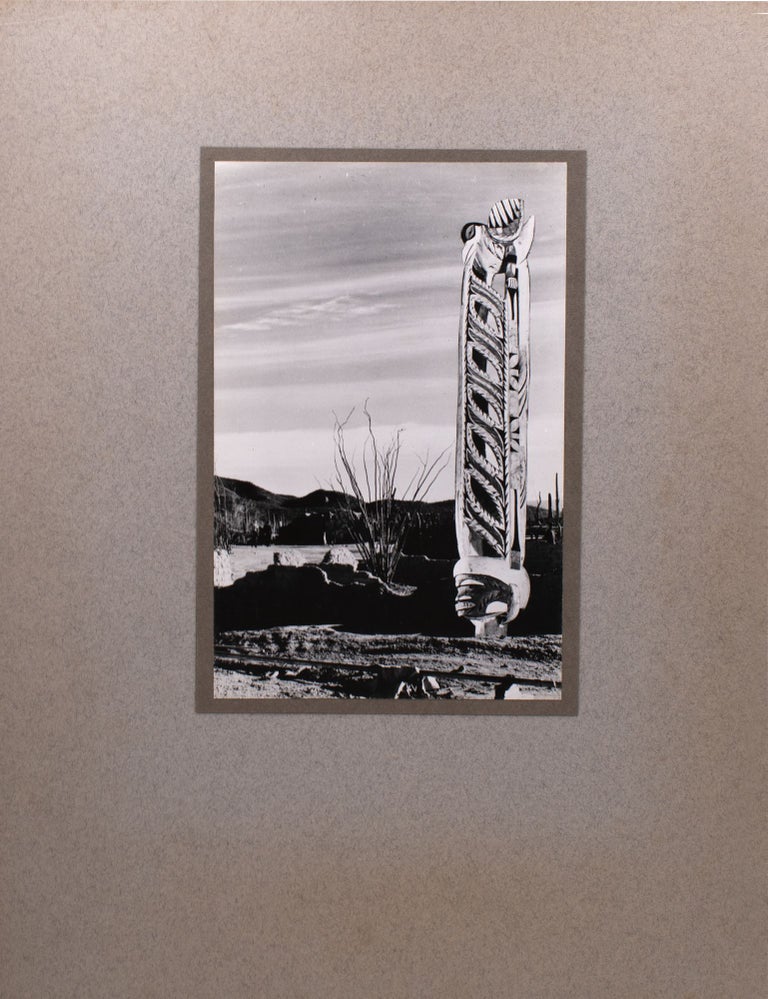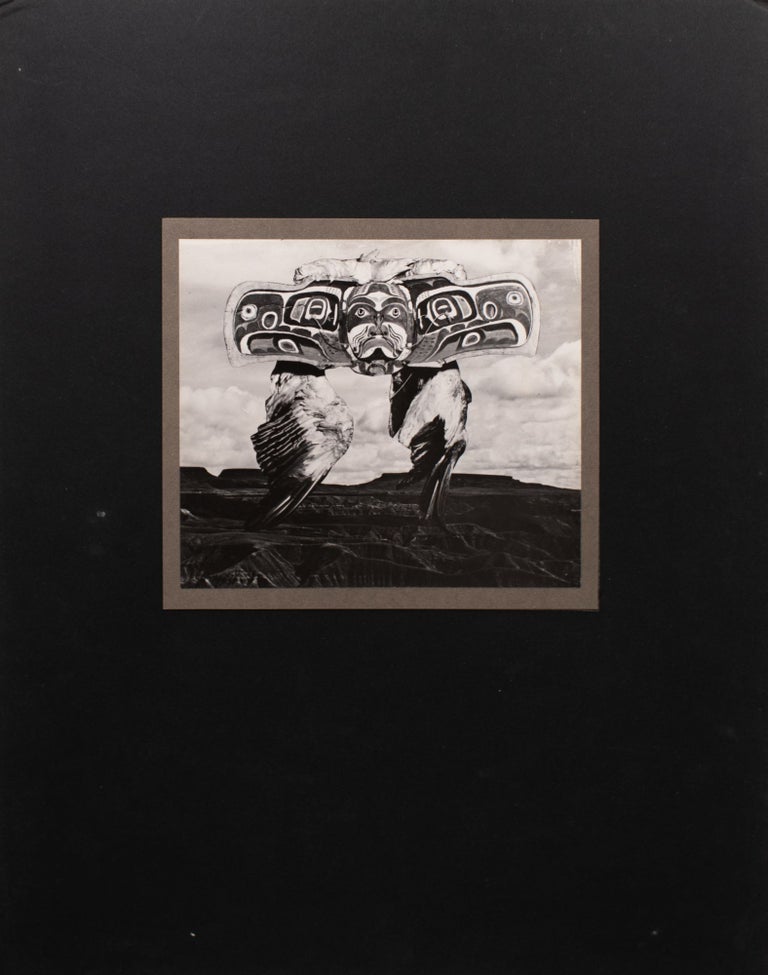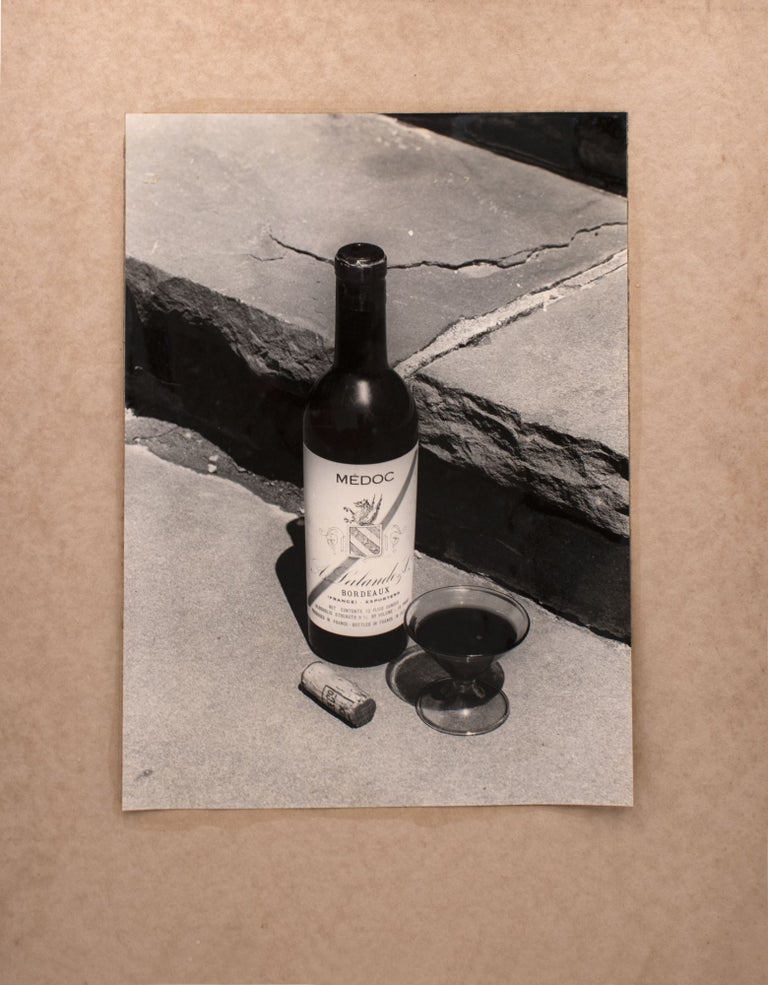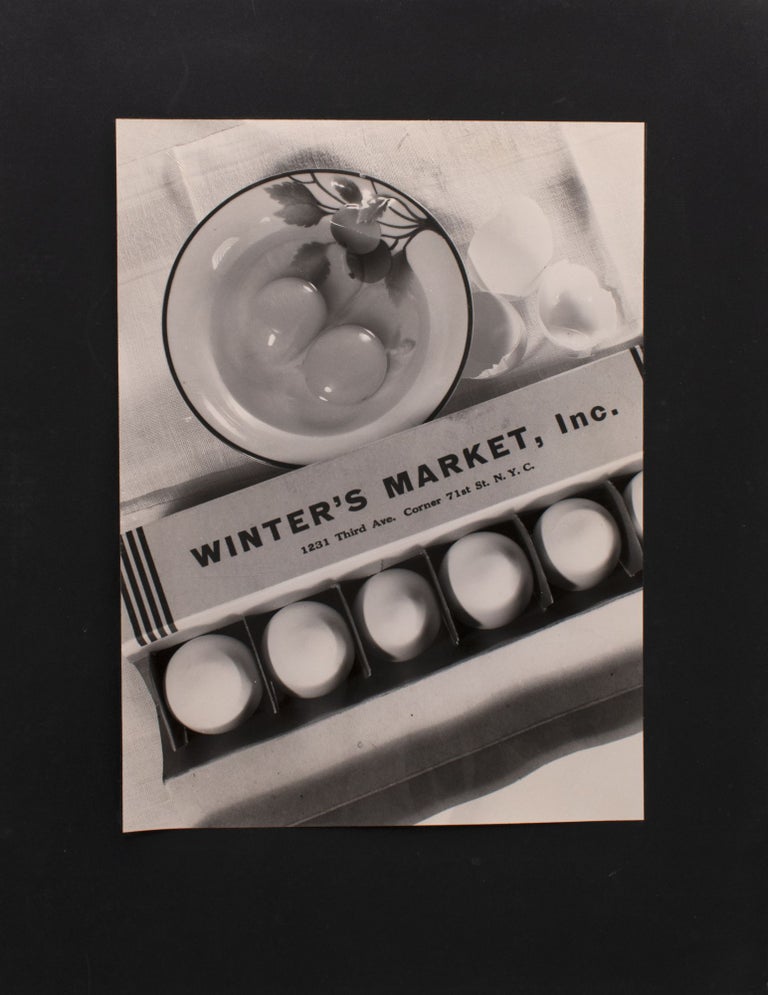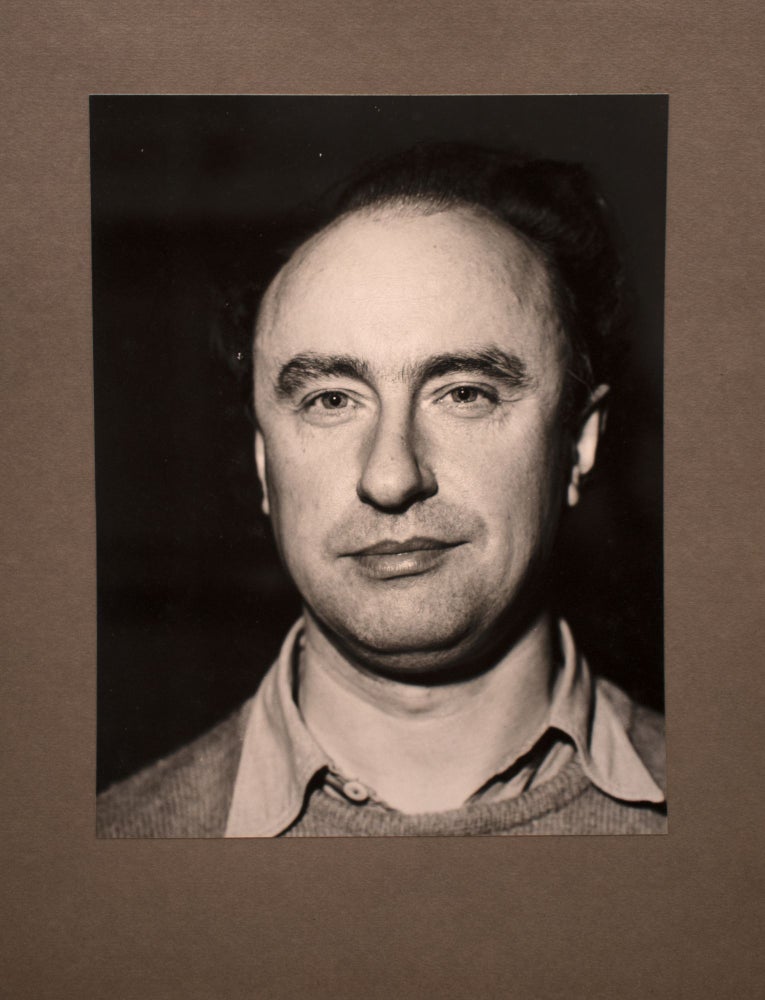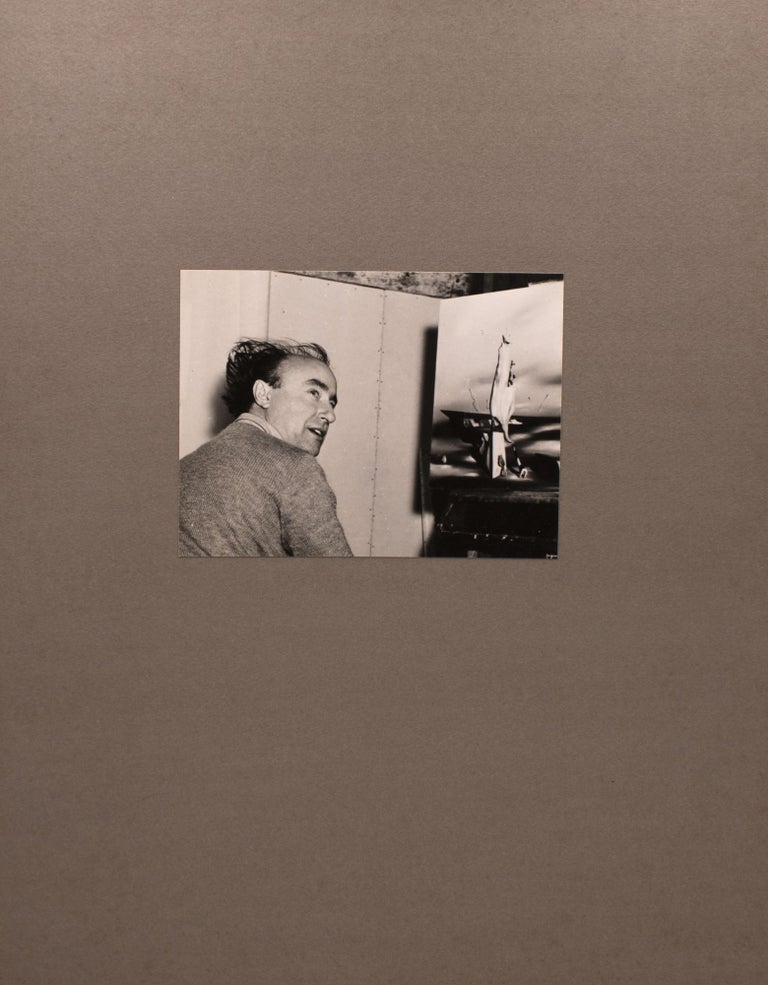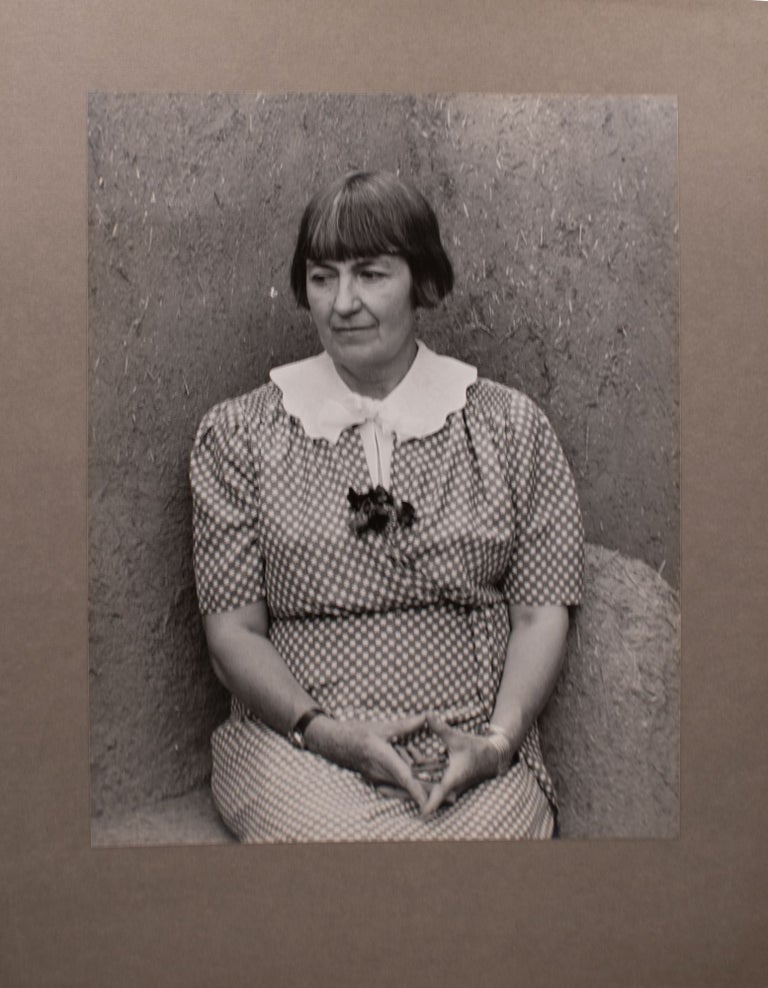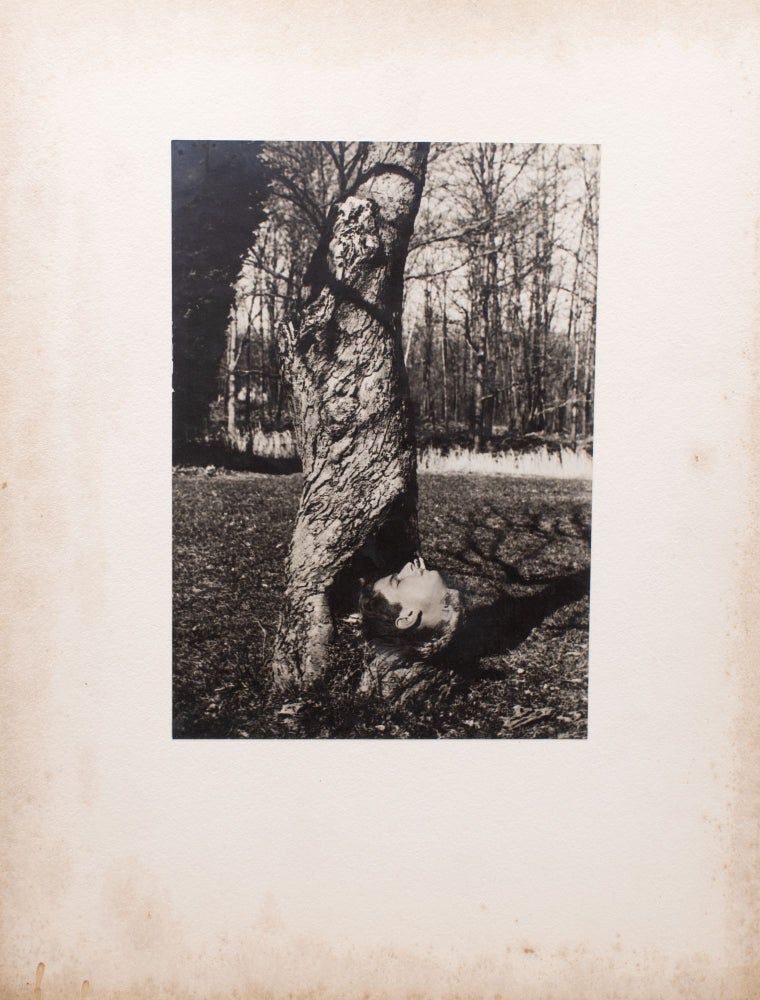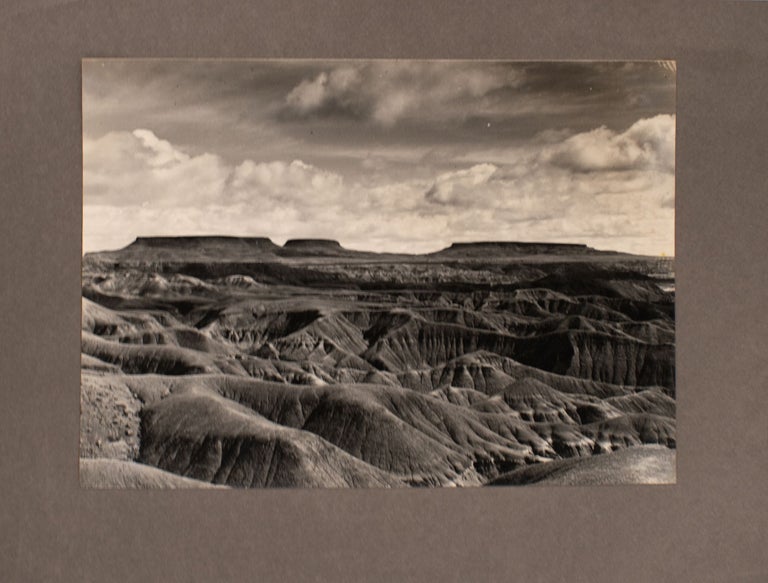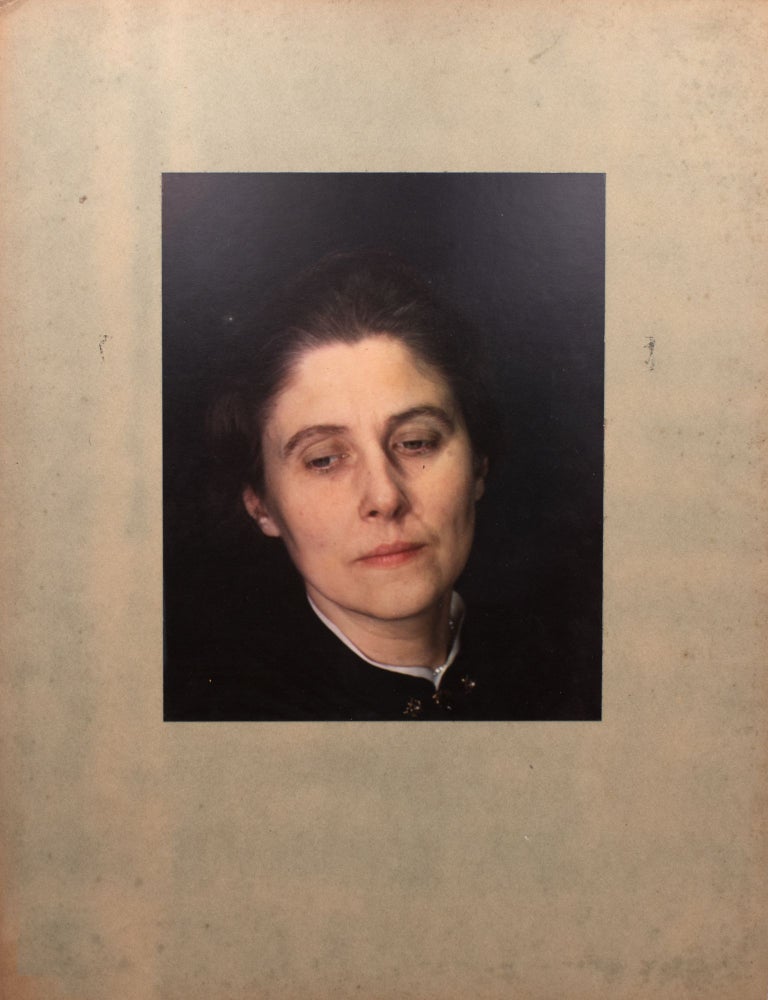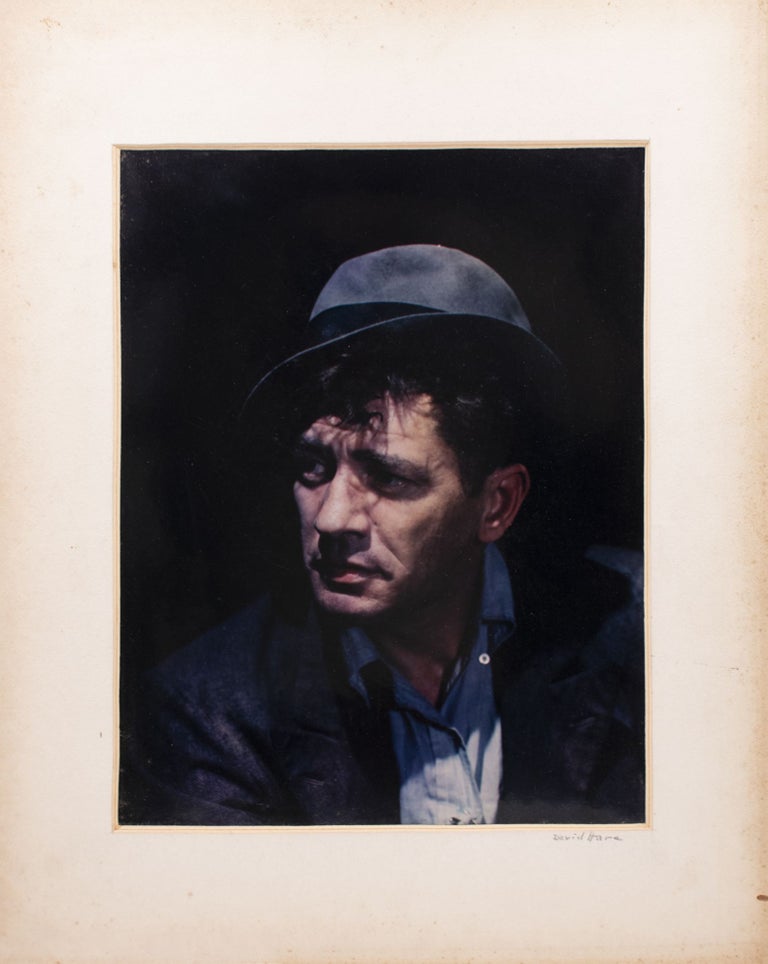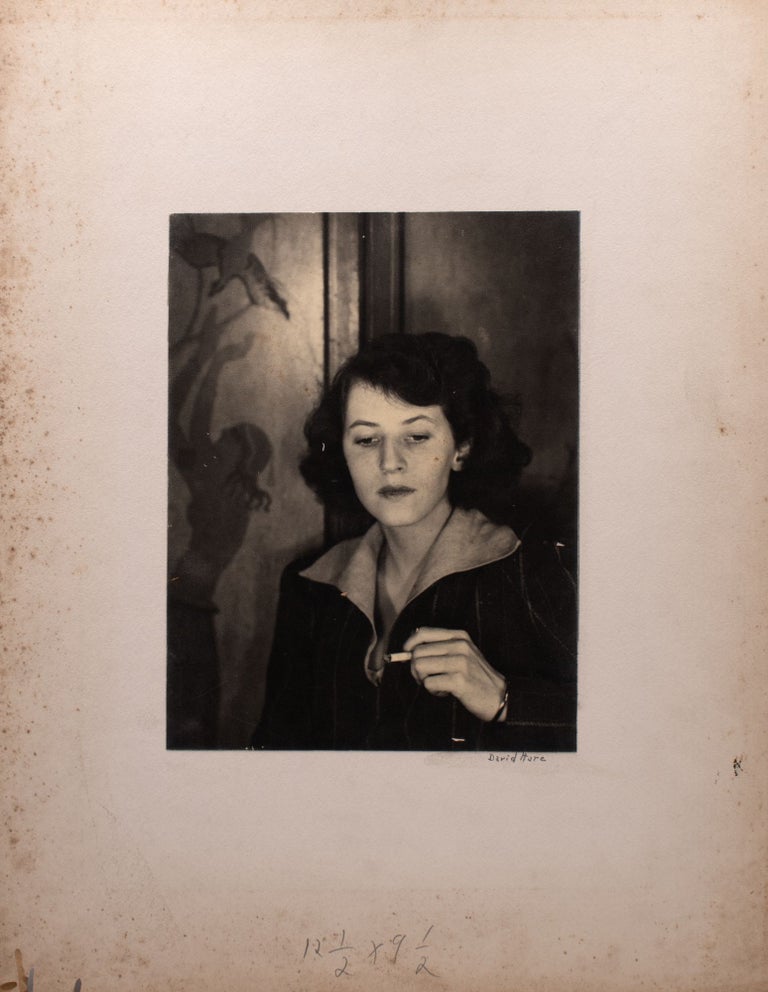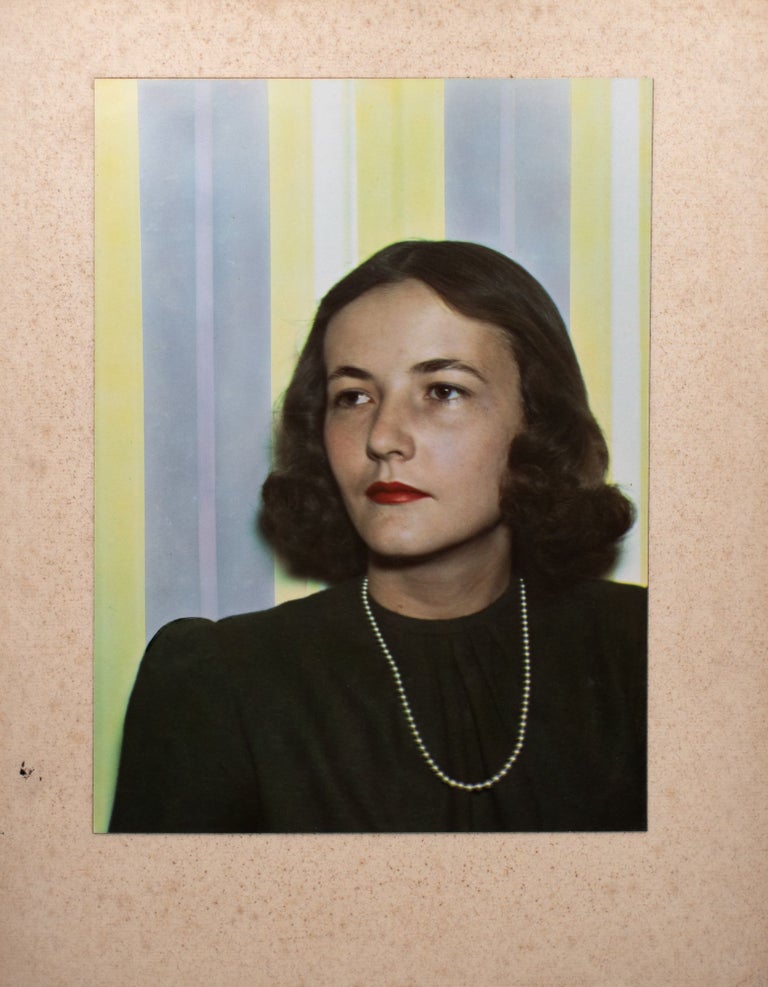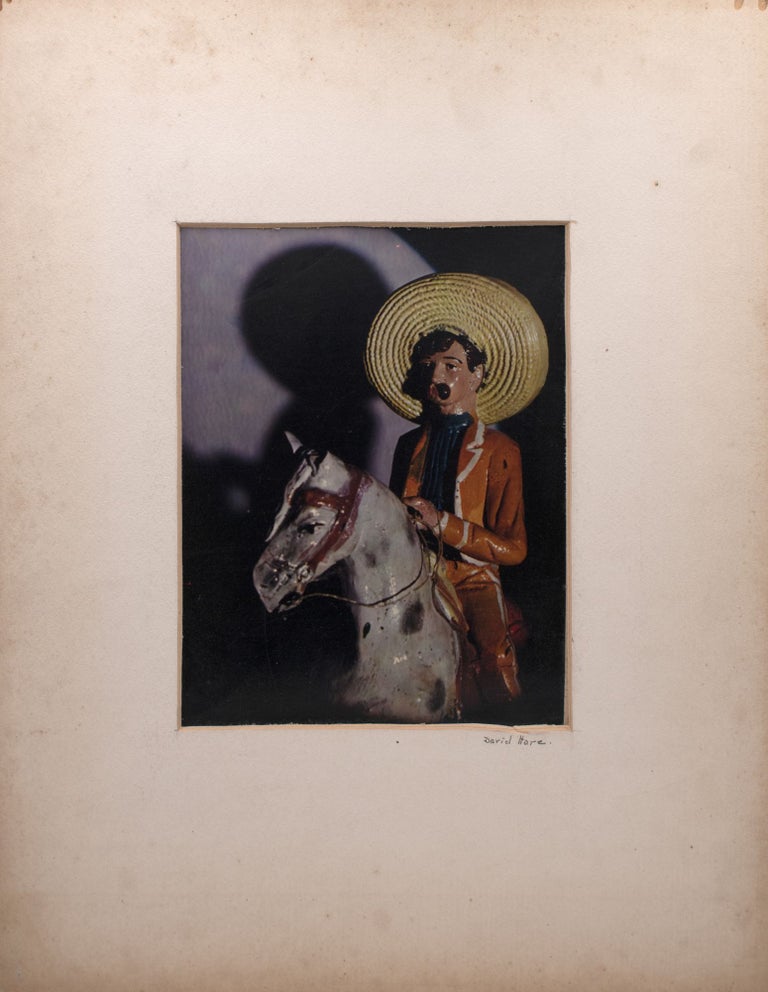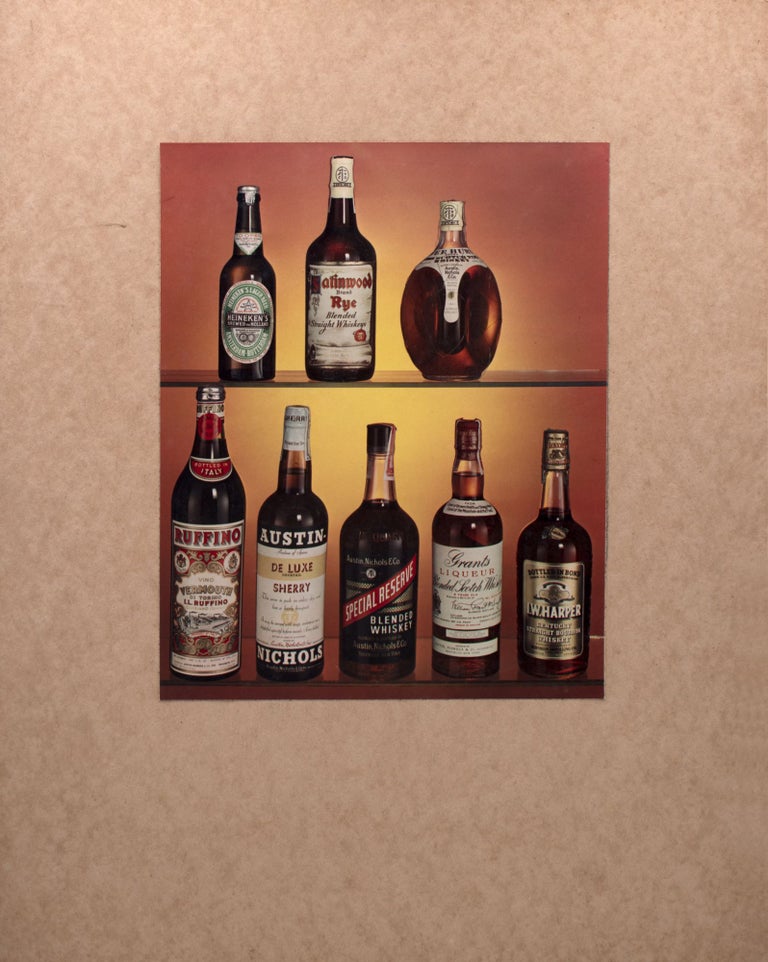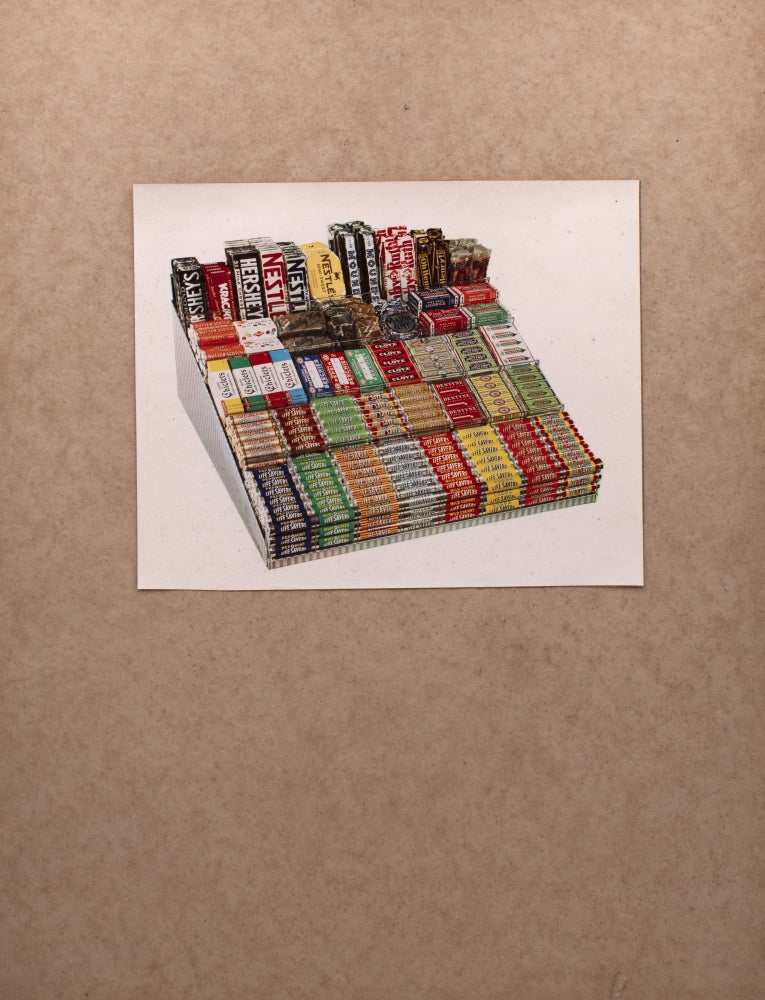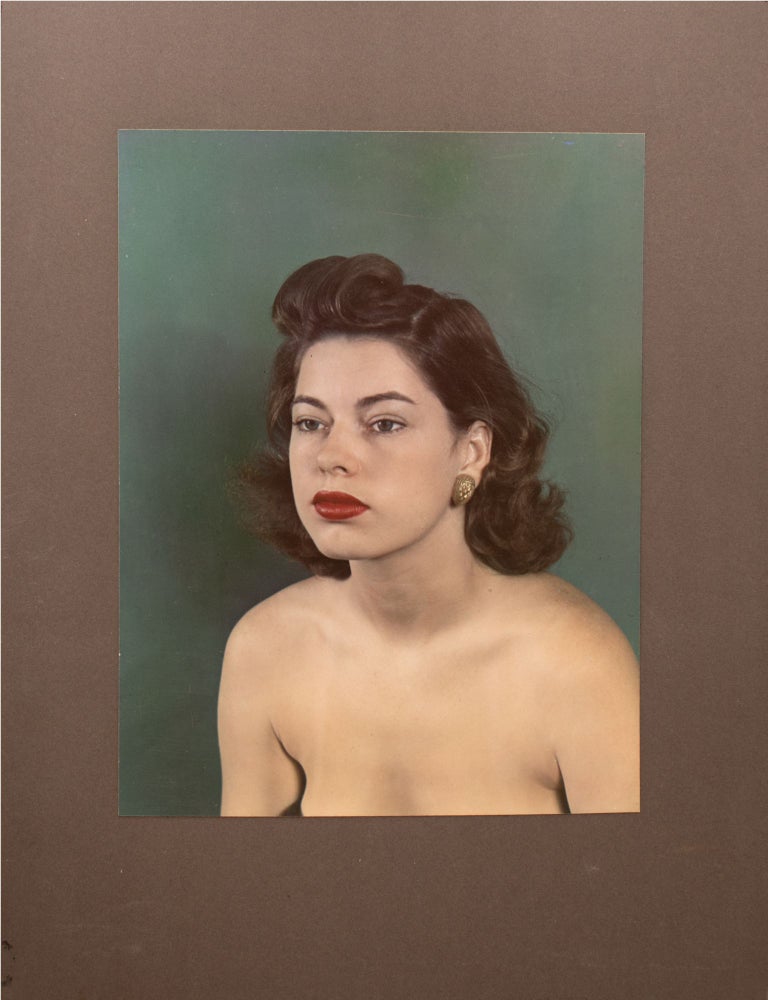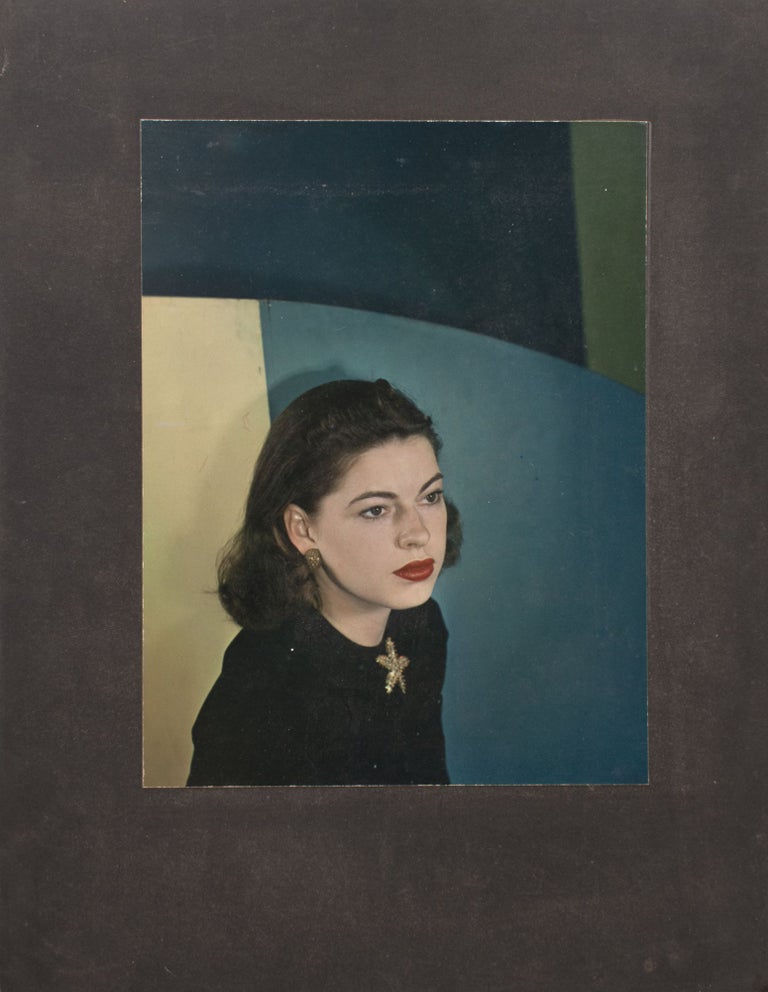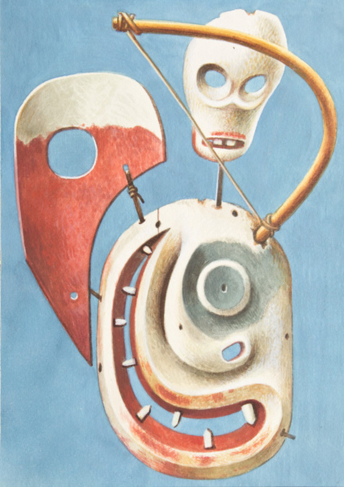Portfolio of early photographs.
c. late 1930s.
Price: $35,000.00
About the item
27 photos mounted on board, approx. 14 x 18 inches. Prints range from approx. 5 x 6-1/2 inches to 13 x 10 inches. 8 Kodak color prints mounted on board, 3 of them signed on the mount; 18 silver gelatin prints mounted on 15 boards; 1 Kodachrome slide; 1 black and white negative transparency. Some soiling to the 2 sets of nude photos on board, otherwise general slight toning, overall very good. With Portfolio case labeled I-A.
Item #324594
Subjects include: Portraits of Yves Tanguy (two, different), Mabel Dodge Luhan, and Robinson Jeffers; six color and black and white portraits; three surrealist photo collages (one with a severed head and two others incorporating Pueblo art); a group of nudes; three commercial images; and a group of surrealist-photographs of everyday items.
David Hare (1917-1992) was born into modern art. His mother, Elizabeth Sage Goodwin, was a collector, friends with Brancusi and Duchamp, and one of the backers of the 1913 Armory Show. When Hare was 10, the family relocated to the Southwest, and he grew up in Santa Fe and Colorado Springs. After studying biology and chemistry at Bard, he dropped out and founded a commercial photography studio specializing in Kodak's new color dye transfer process in Roxbury, Connecticut in 1937. There he met Arshile Gorky, Alexander Calder, and Yves Tanguy, who was married to his cousin, Kay Sage, and began experimenting with automotatist techniques to create surrealist photographs on the side. He was sent on assignment by the Museum of Natural History to take portraits of the "village" Indians in New Mexico, eventually publishing the limited portfolio Pueblo Indians of New Mexico, As They Are Today, twenty color photos that combined ethnography, studio portraiture, and surrealist phenomenology. Editor of Duchamp's magazine, VVV, and a contributor to Sartre's Le Temps Moderne, Hare was a pivotal figure in the American phase of surrealism and, in the words of Clement Greenberg, one of the two preeminent sculptors of nascent Abstract-Expressionism. That he began as a photographer and not, as did so many of his peers, as a draughtsman, and how this may have effected his mature art has not been explored.

